Our latest review of new and recent books about (or connected to) cinema includes an extraordinary look at transness in film; memoirs from Griffin Dunne, Jon Chu, and Susan Seidelman; and several new books on music, highlighted by the latest from the great Steven Hyden. Plus, we run down some noteworthy novels worth checking out before the summer’s end. Let’s hold on to the season a bit longer, shall we?
Corpses, Fools, and Monsters: The History and Future of Transness in Cinema by Willow Maclay and Caden Gardner (Repeater)
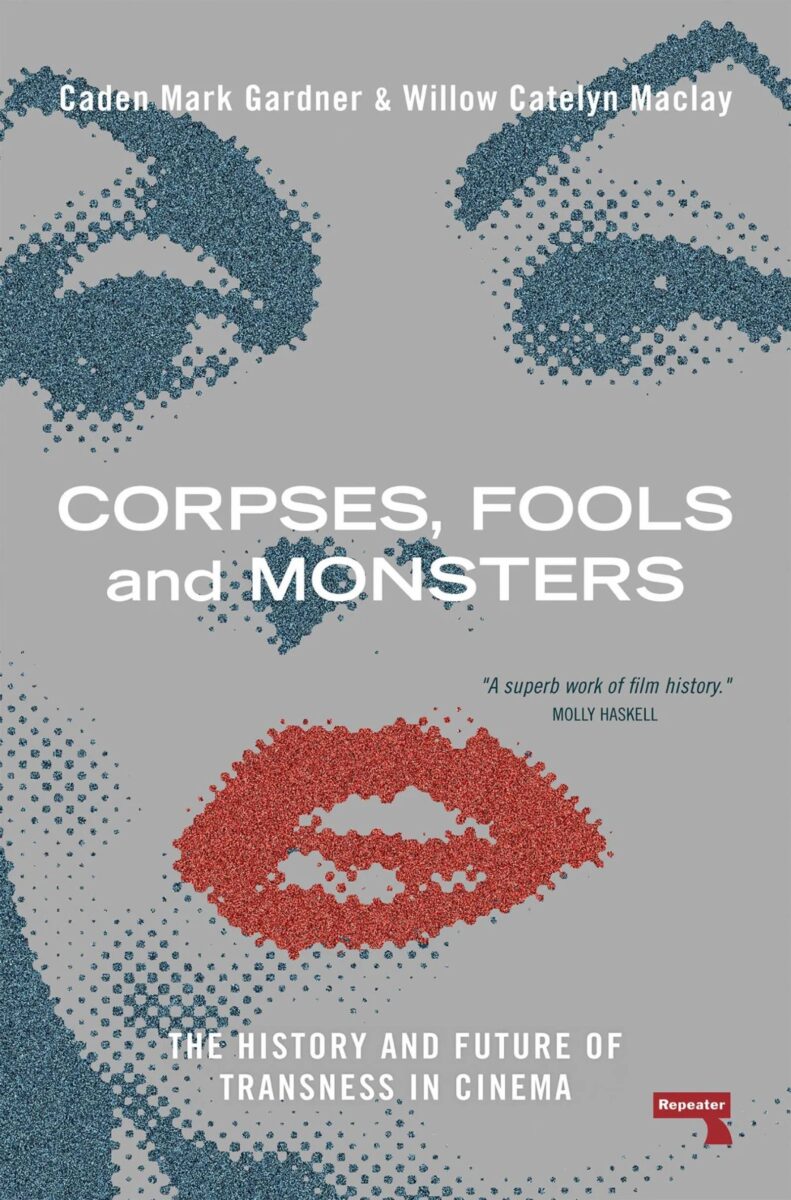
The world of cinema has been in dire need of a book like Corpses, Fools, and Monsters: The History and Future of Transness in Cinema. It is no exaggeration to say that this study of transness in film––from the silent era to more recent works like Isabel Sandoval’s Lingua Franca and Jane Schoenbrum’s We’re All Going to the World’s Fair––is a landmark in writing on cinema. More than a simple history, authors Maclay and Gardner provide crucial context while also wrestling with the complexities of films like The Silence of the Lambs and Boys Don’t Cry. They also celebrate many less well-known productions. “This book places many of these films and images within their periods to give context to the dialogues, societal perceptions, and institutions surrounding trans people,” the authors explain. “Corpses, Fools, and Monsters functions as an admonishment of the ways the mainstream has presented trans lives onscreen through harmful stereotypes and tropes, and in that respect the book was written to serve as a critical history of the trans film image, much as Vito Russo’s The Celluloid Closet: Homosexuality in the Movies has done for gay and lesbian representation.” The comparison to The Celluloid Closet is an apt one. Russo’s book is an essential film-history text, and there is no doubt that Corpses, Fools, and Monsters is an equal.
The Future Was Now: Madmen, Mavericks, and the Epic Sci-Fi Summer of 1982 by Chris Nashawaty (Flatiron Books)
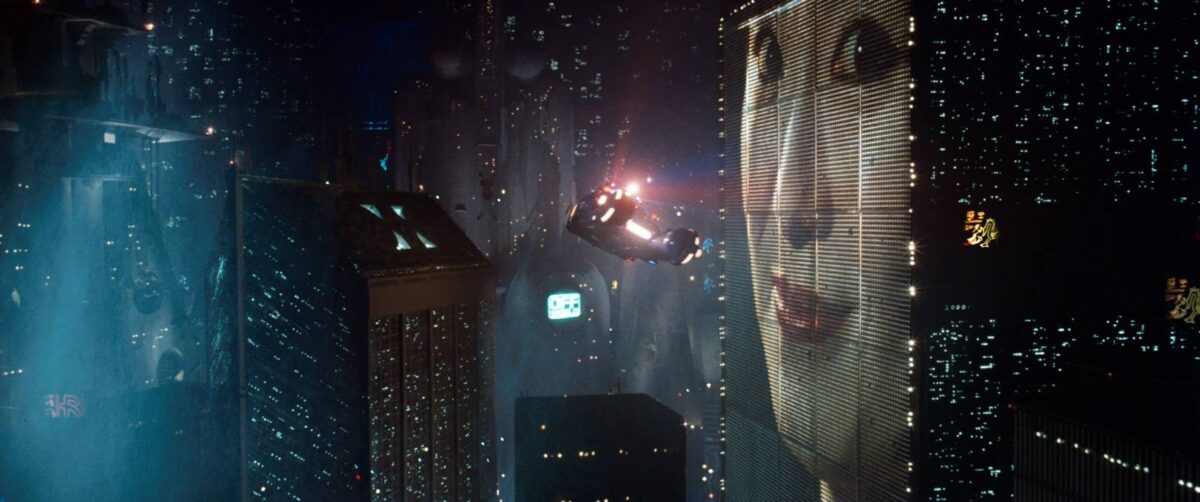
Eight weeks in the summer of 1982 saw the release of eight science fiction films––Blade Runner, Conan the Barbarian, E.T. the Extra-Terrestrial, Poltergeist, The Road Warrior, Star Trek: The Wrath of Khan, The Thing, and Tron––that launched careers, wounded some others, and impacted cinema forever. Chris Nashawaty breaks down how the films were created, produced, and, in a few cases, released to outright hostility. (Poltergeist, E.T., Conan, Khan, and The Road Warrior fared well; the others, not so much.) The Future Was Now is a fast, fun read, and even if the likes of Blade Runner and Tron have been covered elsewhere in great detail, Nashawaty connects the eight legendary films with freshness, humor, and insight. “For better or worse, we now live in a movie era that the summer of 1982 created,” he writes. “You can make a case that Hollywood took all the wrong lessons from these eight weeks and ran them into the ground. But for one glorious summer, at least, the future caught up with the present.”
Viewfinder by Jon M. Chu (Random House)
It might seem a bit early in the life of director Jon M. Chu for a memoir. However, Chu’s career is no ordinary Hollywood story. It involves growing up in Silicon Valley as the child of Chinese immigrants, discovery by Steven Spielberg, a smash hit with Crazy Rich Asians, and a respected, shoulda-been-a-hit with In the Heights. Along the way, he bet on himself and his own instincts. Case in point: the decision to choose Warner Bros. over Netflix for Crazy Rich Asians. “In spite of the money, the preference of our advisers, and my Silicon Valley worldview––my lifelong conviction that the new way is the best way––I chose uncertainty, the traditional approach, and Warner Bros.” As the success of Crazy Rich Asians shows, Chu’s decision paid off in a big way. Viewfinder also includes some interesting details about November’s Wicked. Chu describes listening to the hit musical’s songs as he pondered the offer to direct the long-awaited adaptation. “Its promise to the audience is: You weren’t told the whole story,” he explains. “There’s a different perspective.” In a few months we’ll see if Chu’s instincts pay off once more.
The Friday Afternoon Club: A Family Memoir by Griffin Dunne (Penguin Press)
The life of actor-director Griffin Dunne has been one of highs and tragic lows. He covers both ends in The Friday Afternoon Club, an emotionally overwhelming memoir. Dunne’s has been no ordinary life: childhood in Hollywood as the son of Dominick Dunne and the nephew of John Gregory Dunne and Joan Didion, roommates with Carrie Fisher in his 20s, acclaim for his performance in After Hours, and the horrific murder of his actress sister, Dominique. The events surrounding her brutal slaying are the most upsetting of the book, and Dunne covers the murder and trial with great candor. The pain is still evident, and it is clear that writing The Friday Afternoon Club has been a way for Dunne to gain a greater understanding of the worst period of his family’s lives. “I’m not sure exactly when, either after the funeral, waiting for the trial, or during the trial, but at some point everyone in my family had become, each in our own way, totally insane.” The pain never ends, but Dunne shows how life somehow continues. His must-read memoir concludes with the birth of his daughter, in a sequence that is tremendously affecting and beautifully life-affirming.
Desperately Seeking Something: A Memoir About Movies, Mothers, and Material Girls by Susan Seidelman (St. Martin’s Press)
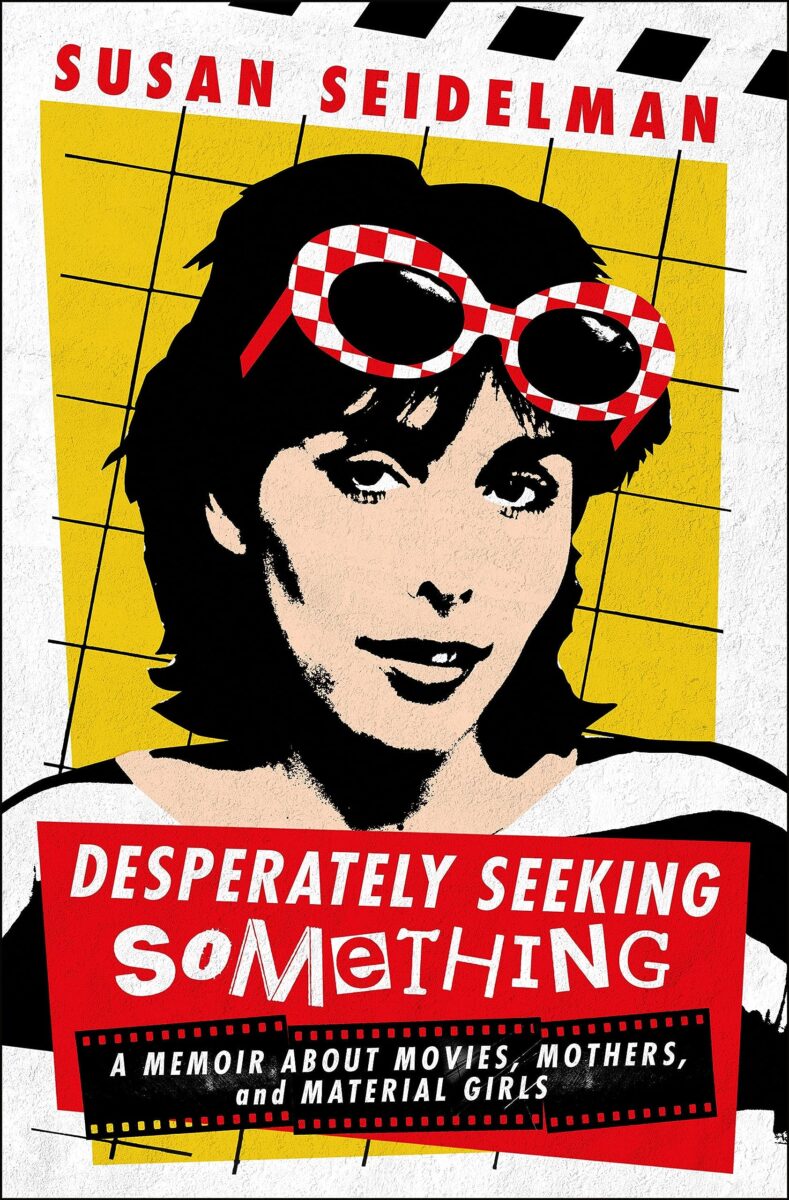
During my Film Stage interview with author Carrie Couragen about her recent book, Miss May Does Not Exist: The Life and Work of Elaine May, Hollywood’s Hidden Genius, she touched on the lack of opportunities for many female directors in past decades compared to their male counterparts. As Couragen put it, “It’s not an accident that so many women directors don’t have prolific bodies of work. They don’t have, you know, vast filmographies like some of their counterparts and peers, especially from that time period. It struck me that there was such a pattern of, like, one-and-done or two-and-done, or do a couple of and then move to TV because it’s cheaper and you can get a budget.” I thought about that quote while reading Susan Seidelman’s sharp, entertaining memoir Desperately Seeking Something. Indeed, the author touches on this thought early in the book. She describes bored-ly checking her Wikipedia page and seeing the following question: Whatever happened to Susan Seidelman? “Women don’t age well in the film business, neither in front of nor behind the camera,” she writes. “Have I been invisible for too long? Had I been erased?” The humor-filled Desperately Seeking Something will go a long way toward reestablishing the cred of the director of Smithereens, Desperately Seeking Susan, and She-Devil.
New music books
Two of the finest books ever written about Bruce Springsteen have been released in the last two years. In 2023, Warren Zanes’ Deliver Me from Nowhere chronicled the making of the Boss’ stark masterpiece, Nebraska. Now comes the latest from Steven Hyden, There Was Nothing You Could Do: Bruce Springsteen’s “Born in the U.S.A.” and the End of the Heartland (Hachette Books). And as you would expect from the author of stellar books on Pearl Jam and Radiohead, There Was Nothing You Could Do explores the legacy and meaning of Born in the U.S.A. with startling insight, wit, and intelligence. Most enthralling is Hyden’s analysis of the post-Born Bruce. “For the remainder of the eighties and most of the nineties, his every artistic move in some way would be a reaction to how Born in the U.S.A. changed him,” Hyden writes. “He would continue to be informed by his mid-eighties epoch well into the twenty-first century as well.”
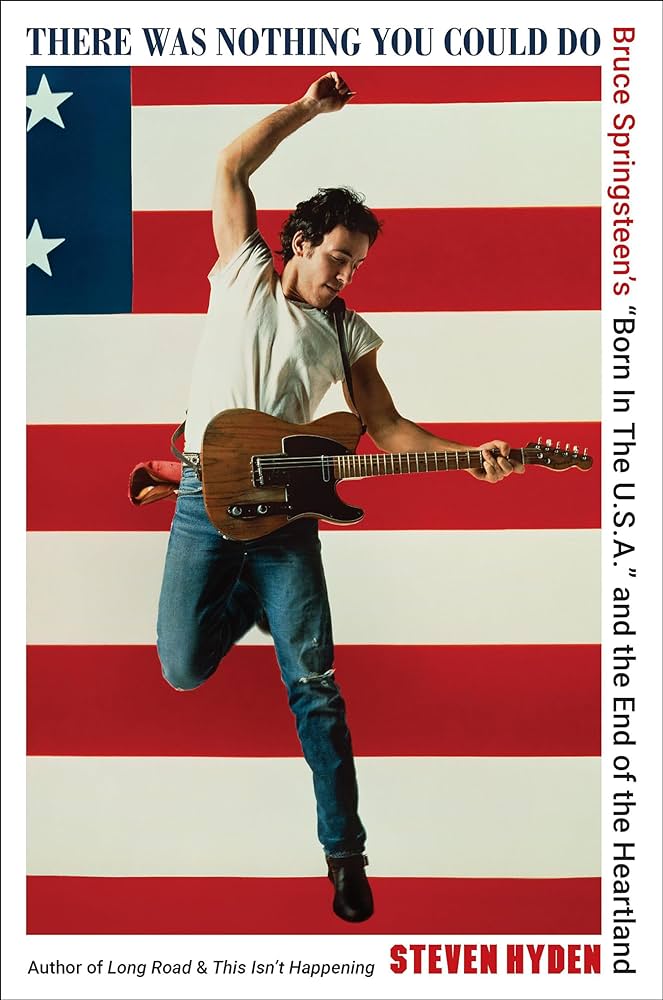
The paperback version of punk icon Patti Smith’s A Book of Days (Random House Trade Paperbacks) is a must for anyone who has not already checked out her collection of 365 snaps. The images are deeply poignant, presented with Smith’s inimitable grace and warmth. One of my favorites is a shot of Smith with the late Williams S. Burroughs originally posted to Instagram on the occasion of the Naked Lunch author’s birthday. “I miss walking by his side, always pleased and proud to do so,” she writes. “Happy birthday, dear William, may your golden sails reach the port of saints.”
Like Patti Smith, the work of Bikini Kill’s Kathleen Hanna has been influencing artists for decades. Hanna shares her often harrowing journey from a troubled family situation to music stardom and, later, very scary health issues in Rebel Girl: My Life as a Feminist Punk (Ecco). It will come as no surprise to anyone who has followed her career with Bikini Kill and Le Tigre that Hanna writes about even the darkest subject matter with great humor; ultimately, Rebel Girl is a story of triumph, and a moving one at that. “Feeling happy in my offstage life felt like a foreign landscape to me, one fraught with many emotional land mines,” she writes. Happily, Hanna has found peace at last.
Lastly, Shake It Up, Baby!: The Rise of Beatlemania and the Mayhem of 1963 by Ken McNab (Pegasus Books) is, yes, another book about the Fab Four. Some of the details in Shake It Up have been covered previously, but there is still great joy to be found in revisiting the early days of Beatlemania. Especially fascinating are the stories of George Harrison’s visit to see his sister in Illinois in the early 1960s, before the Beatles hit America. He was interviewed on a Saturday morning show on WFRX radio, and McNab points out, this was likely one of the first times the band’s music was heard on American airwaves.
Quick hits
In recent months, Titan Books has been releasing beautifully illustrated hardcover texts exploring the designs of Marvel’s Infinity Saga, and we have now arrived at our first go-round with Captain America, the Avengers’ big-screen debut, and the third Tony Stark movie. Marvel Studios’ The Infinity Saga: Captain America: The First Avenger: The Art of the Movie by Matthew K. Manning, Marvel Studios’ The Infinity Saga: The Avengers: The Art of the Movie by Jason Surrell, and Marvel Studios’ The Infinity Saga: Iron Man 3: The Art of the Movie by Marie Javins and Stuart Moore are filled with concept art and behind-the-scenes visuals exploring these films by Joe Johnston, Joss Whedon, and Shane Black.
A different type of design––the brick-based kind––is featured in the latest LEGO Harry Potter Visual Dictionary (DK) by Elizabeth Dowsett. These LEGO visual dictionaries are always a delight, and this new entry collects sets and minifigures from 2018 to early 2024. Plus, Robert Pattinson fans should be aware that the book comes with a wee Cedric Diggory.
Long before the heavyweight casts of the Harry Potter films there was A Bridge Too Far, the World War II epic for which producer Joseph E. Levine and director Richard Attenborough brought together 14 major stars. The production is chronicled in Making A Bridge Too Far (GoodKnight Books) by Simon Lewis, and the stories of how Bridge was made are as entertaining as the film itself. Lewis expertly gives “a flavour of the effort the cast and crew expended during s hot summer in Holland in 1976.”
Through a Noir Lens: Adapting Film Noir Visual Style (Columbia University Press) by Sheri Chinen Biesen offers a different sort of flavor, exploring the noir aesthetic past and present. Especially interesting is the book’s analysis of “Netflix noir” style, from transnational production Babylon Berlin to Marvel’s Jessica Jones and hits like Ozark.
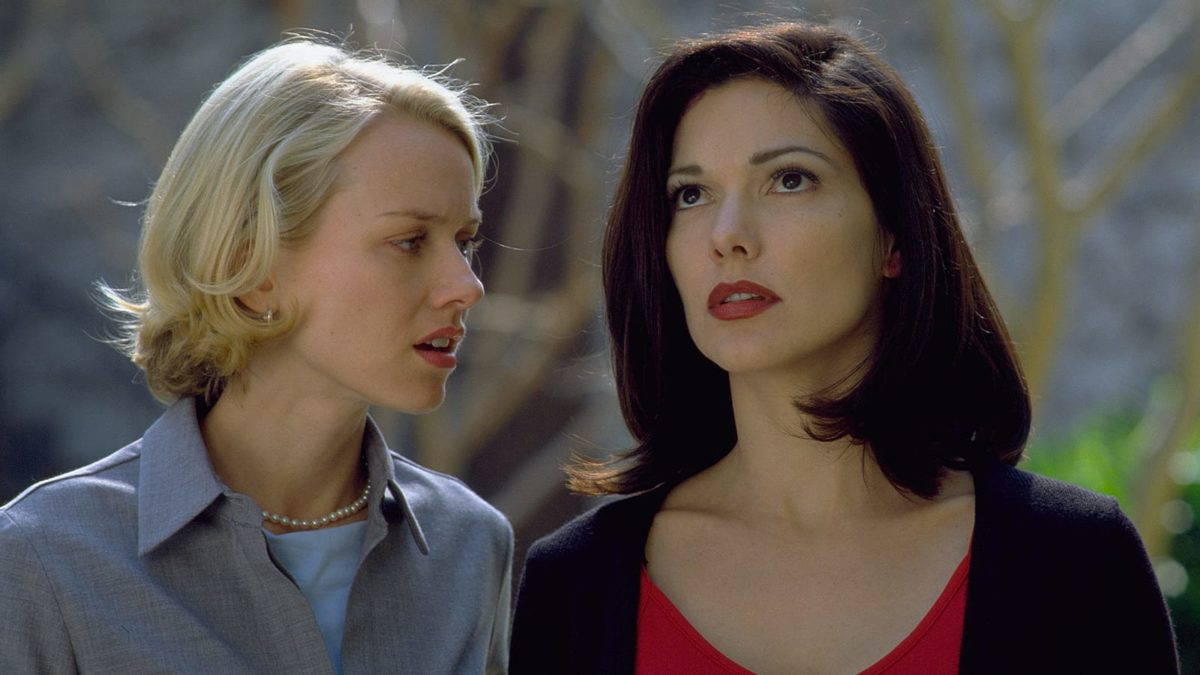
The work of the wonderfully incisive critic and essayist Phillip Lopate is compiled in My Affair with Art House Cinema: Essays and Reviews (Columbia University Press). Lopate’s writing on other critics is always of interest, but it is hard to top his approach to films and filmmakers like Hong Sang-Soo and David Lynch. Mulholland Dr., Lopate writes, “operates like a fusion between film and pop music: you can enter it at any point; you can leave it on in the background, like a movie screen at a disco; you can be pulled into its unresolved, sensual, less-than-overbearing narrative, with sexy actors contributing to a kind of person, open-ended fantasy––a machine for yearning.”
And in Harun Farocki: Forms of Intelligence (Columbia University Press), author Nora M. Alter offers a compelling and much-needed look at the work of the late German artist and filmmaker Harun Farocki. “He long identified as an experimental filmmaker,” she writes, “and referred to himself as the ‘best-known, unknown filmmaker in Germany.”
Novels in brief
I have fond memories of plowing through Michael Crichton paperbacks during the summer months in the early ’90s, so I was intrigued when I heard that James Patterson was tasked with finishing up a new novel by the late Jurassic Park author. The result is a solid beach read with an oh-so-Crichton plot about a soon-to-erupt volcano and a military cover-up. The film rights for Eruption (Little, Brown and Company) have already been snapped up, and the book has taken the top spot on summer bestseller lists. A Michael Crichton book at the top of the charts, with a movie adaptation on the way? It’s the ’90s all over again.
In a matter of days, Alien: Romulus will be scaring us in cinemas, so the release of Alien: Uncivil War (Titan Books) by Brendan Deneen is a case of spectacularly good timing. This is a brisk, ultra-intense read about a father trying to protect his daughters from a xenomorph and a planet on the verge of chaos.
The first three books in R. A. Salvatore’s bestselling Legend of Drizzt series are now available as trade paperbacks; Homeland, Exile, and Sojourn (Random House Worlds) make up the author’s Dark Elf Trilogy, which follows the adventures of D&D legend Drizzt Do’Urden. Meanwhile, the latest Star Wars releases include High Republic-era adventure of Temptation of the Force (Random House Worlds) by Tessa Gratton (the audiobook is read by Marc Thompson) and Iron Fist: Star Wars Legends (Wraith Squadron) (Random House Worlds) by Aaron Allston (also read by Marc Thompson).
In the land of spooky novels, one current favorite of mine is Horror Movie (William Morrow) by Paul Tremblay, whose A Cabin at the End of the World was adapted by M. Night Shyamalan into Knock at the Cabin. Horror Movie is about a cursed 1990s production and the one cast member who has survived. Meanwhile, this column has often featured novels by Riley Sager, and his newest thriller is a creepy gem. Middle of the Night (Dutton) features a man returning to a childhood home haunted by the disappearance of his friend three decades before. Josh Winning follows up Burn the Negative with Heads Will Roll (Putnam), a razor-sharp horror comedy about a canceled sitcom star whose stint at a camp for troubled adults might just end her life. And The Deep (Putnam) by Alma Katsu is haunted historical fiction involving the Titanic, World War I, and buried secrets.
Moving from horror to mystery, we find The Witches of Bellinas by J. Nicole Jones (Catapult), a Stepford Wives- / Don’t Worry Darling-esque thriller set at a cultish enclave in northern California. Speaking of cults: Rouge by Mona Awad (S&S/Marysue Rucci Books) is an inspired, unhinged thriller that combines the cult of beauty products and skincare obsession with the ties that bind mother and daughter. The gripping thriller Kala (Vintage) by Colin Walsh involves the reunion of childhood friends whose teenage years in a seaside town in Ireland were forever changed by an unexplained disappearance. The Final Act of Juliette Willoughby (Harper) is a twist-heavy page-turner written by the husband-and-wife writing duo who go by the pseudonym Ellery Lloyd. It follows the discovery of a painting by a famous 1930s heiress that was thought to have been destroyed in a fire. And The Lost Boy of Santa Chionia (Knopf) by Juliet Grames tells an enthralling story involving a young American in 1960s Italy, the skeleton of an unidentified human, and the secrets of a small, isolated village.
There are several noteworthy new dramas I encourage you to check out, starting with Evenings and Weekends (Mariner Books) by Oisín McKenna. His debut novel follows a group of interconnected characters during a sweltering London weekend in 2019. Anyone’s Ghost (Penguin Press) by August Thompson shares its title with one of my favorite songs by the National, and the book’s vibe––dark comedy, bad memories, doomed love––also has the feel of a song from High Violet or Sleep Well Beast. Thompson’s debut novel explores the love of two teenagers during a summer in New Hampshire and the ramifications that follow. And Shanghailanders (Spiegel & Grau) by Juli Min is a wildly ambitious, hugely satisfying debut novel following a wealthy Shanghai family in reverse, from 2040 to 2014. Min is a talent to watch.
Lastly, let’s close with two lighter novels, both ideal for a summer’s day. Lo Fi (Riverhead Books) by Liz Riggs is a sonic blast of love and heartbreak set amidst the Nashville indie-rock club scene. And You Are Here (Harper) by One Day author David Nicholls is a fine novel about long walks, second chances, and the joys of getting lost. It will make you want to get outside, and that’s a very August feeling.
